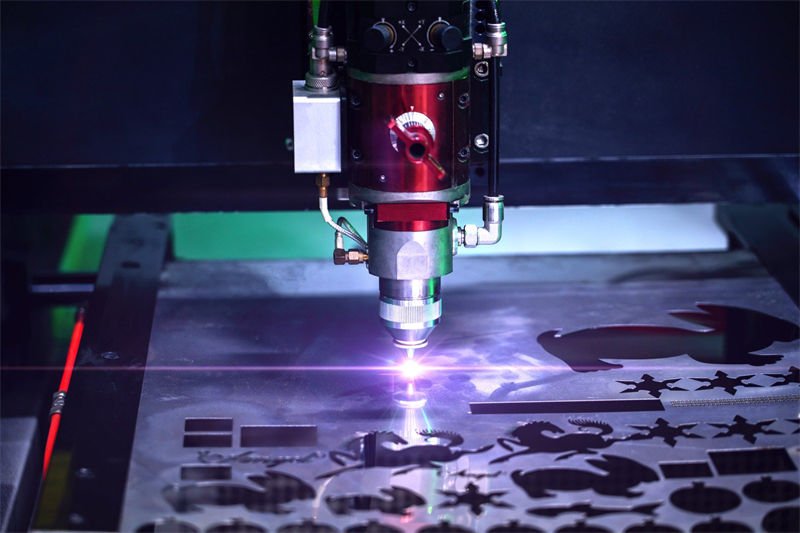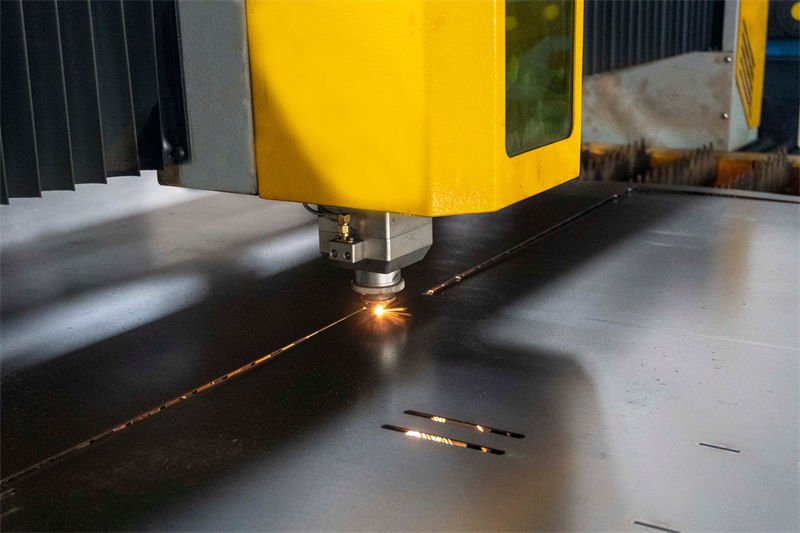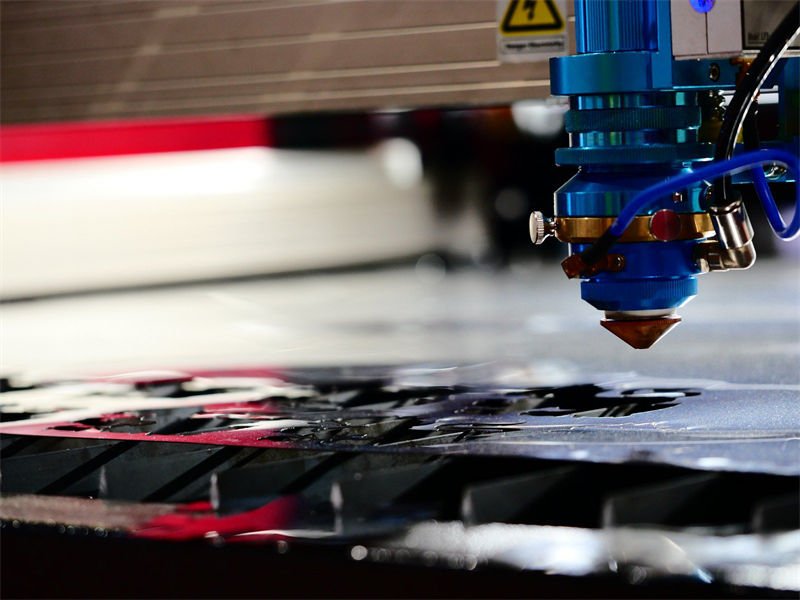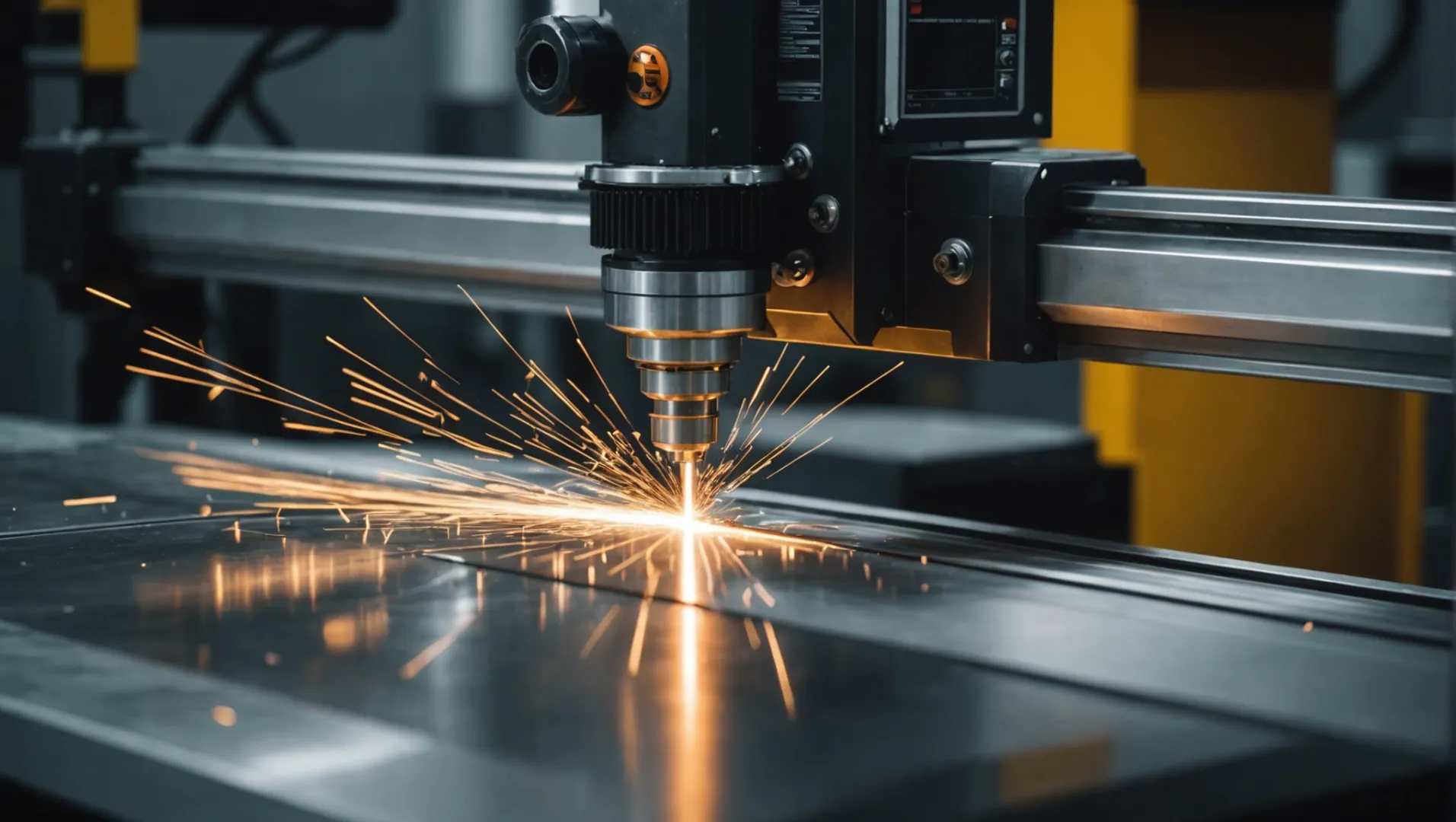
Selecting the right laser can feel like navigating a maze, but I’m here to help you find your way!
For cutting metal, fiber lasers are generally more efficient and cost-effective than CO2 lasers, especially for cutting stainless steel and aluminum. Fiber lasers offer faster speeds and higher precision, making them ideal for intricate cuts.
But before you rush into a decision, let’s dive deeper into the unique advantages each laser type offers. Your specific project requirements will play a significant role in your choice.
Fiber lasers cut stainless steel more efficiently than CO2 lasers.True
Fiber lasers excel in speed and precision, ideal for stainless steel.
What Are the Advantages of Fiber Lasers for Metal Cutting?
Fiber lasers have revolutionized metal cutting with unmatched efficiency and precision.
Fiber lasers offer superior speed, precision, and cost-effectiveness in metal cutting, making them ideal for complex designs and thin materials. They excel in cutting reflective metals like aluminum and copper, outperforming traditional CO2 lasers.

Speed and Precision
Fiber lasers are known for their incredible speed and precision. Their ability to focus a high-energy beam into a small spot results in faster cutting speeds, especially beneficial when working with thin metals or intricate designs. This increased efficiency allows for higher productivity and reduced lead times.
Versatility in Materials
One significant advantage of fiber lasers is their ability to cut a wide variety of metals, including highly reflective materials like aluminum and copper. Unlike CO2 lasers, which often struggle with these materials, fiber lasers can cut through them effortlessly due to their shorter wavelength.
Cost-Effectiveness
While the initial investment in a fiber laser may be higher, the long-term savings are substantial. Fiber lasers consume less energy and require minimal maintenance compared to CO2 lasers, reducing operational costs. They also have a longer lifespan, providing a better return on investment.
| Feature | Fiber Laser | CO2 Laser |
|---|---|---|
| Speed | Faster, especially on thin metals | Slower on thin materials |
| Maintenance | Low | High |
| Material Versatility | Excellent for reflective metals | Limited on reflective metals |
Enhanced Beam Quality
The beam quality of fiber lasers leads to cleaner cuts with minimal burring or dross, reducing the need for secondary finishing processes. This precision enhances the overall quality of the finished product, making fiber lasers an attractive option for industries requiring high-quality standards.
Compact Design and Efficiency
Fiber laser systems are more compact than traditional laser systems. Their efficient design allows for easier integration into existing production lines, saving valuable floor space. The high efficiency of these lasers also translates into lower energy consumption.
To learn more about optimizing your laser cutting processes and overcoming challenges such as layering issues1 or dross formation2, continue exploring the blog series.
Fiber lasers are faster than CO2 lasers for thin metals.True
Fiber lasers focus energy more efficiently, increasing cutting speed.
CO2 lasers are better for cutting reflective metals.False
Fiber lasers excel at cutting reflective metals like aluminum.
How Do CO2 Lasers Compare in Metal Cutting Performance?
CO2 lasers have been a staple in metal cutting for decades, but how do they measure up today?
CO2 lasers excel in cutting thicker materials like steel with smoother edges but generally lag behind fiber lasers in speed and efficiency for thinner metals. They require more maintenance and higher operational costs, making them less economical for high-volume production compared to fiber lasers.

Performance on Various Metals
CO2 lasers have a unique ability to cut thicker metals, such as steel and titanium, producing smooth and clean edges. This characteristic is particularly advantageous for industries requiring cuts in robust and dense materials. However, when it comes to thinner metals or non-metals like wood and acrylics, CO2 lasers may not match the speed and precision offered by fiber lasers.
- Material Thickness: For metals thicker than 5mm, CO2 lasers deliver superior edge quality.
- Surface Finish: Known for providing a polished finish on certain metals, CO2 lasers can eliminate the need for secondary polishing.
Efficiency and Cost
While CO2 lasers have their strengths, they tend to fall short in terms of efficiency when cutting thin metals. Their energy consumption is significantly higher than that of fiber lasers, leading to increased operational costs.
| Factor | CO2 Laser | Fiber Laser |
|---|---|---|
| Energy Usage | High | Low |
| Maintenance | Frequent (more parts) | Minimal (solid-state) |
| Cutting Speed | Slower | Faster |
Operational Challenges
CO2 lasers require careful maintenance due to their complex optical paths and mirrors, which can accumulate dust and reduce cutting effectiveness. This maintenance requirement can lead to longer downtimes and increased costs. Additionally, ensuring proper alignment3 of these components is crucial for optimal performance.
Versatility in Applications
Despite some drawbacks, CO2 lasers are versatile and capable of handling a wide range of materials beyond metals. This makes them suitable for businesses that require a multipurpose cutting solution.
- Non-Metal Materials: Ideal for cutting plastics, wood, and glass.
- Intricate Designs: Capable of producing detailed engravings on various surfaces.
In summary, CO2 lasers hold their ground with specific advantages in cutting thicker materials and non-metal applications. However, for operations focusing on speed, efficiency, and lower running costs, fiber lasers present a more modern and cost-effective solution.
CO2 lasers are more efficient than fiber lasers for thin metals.False
Fiber lasers are faster and more efficient for thin metals.
CO2 lasers provide smoother edges on thick steel than fiber lasers.True
CO2 lasers excel in cutting thicker materials with smooth edges.
What Common Problems Occur in Laser Metal Cutting?
Laser metal cutting, while precise and efficient, often encounters challenges that can hinder performance and finish quality.
Common issues in laser metal cutting include layering in the cut section, dross, slow speed, and uneven surfaces. Solutions involve adjusting speed, gas pressure, nozzle settings, and focus.

Layering in the Cut Section
Layering occurs when the laser fails to cut evenly through the metal, leaving a rough, stepped finish. This can result from incorrect settings or material inconsistencies. To resolve this:
- Change the cutting speed: Slowing down may improve penetration.
- Adjust the cutting gas pressure: This helps maintain a smooth cut.
- Modify the nozzle aperture: A smaller nozzle can enhance precision.
- Alter the negative defocus amount: This adjusts the focal point for better results.
- Adjust the pulse frequency: Consistent pulses can reduce layering.
Dross on the Cut Surface
Dross is excess material that solidifies on the edges of cuts. It’s often due to improper speed or pressure:
- Change the cutting speed: Faster speeds can prevent dross formation.
- Adjust the cutting gas pressure: Higher pressure aids in clean cuts.
- Change the negative defocus amount: Proper focusing minimizes waste.
- Adjust the nozzle spacing: Optimal spacing ensures thorough cuts.
Slow Cutting Speed
Sluggish speeds may arise from technical issues or improper settings:
- Check optical lenses for dirt: Clean lenses ensure clear laser paths.
- Adjust cutting gas pressure: Correct pressure enhances efficiency.
- Change the defocus amount: Align focus to improve speed.
- Check laser power: Ensure power levels are optimal.
- Use a different model nozzle aperture: Sometimes, a new nozzle type is needed.
Yellowing of the Cutting Surface
Yellowing is often caused by impurities or incorrect cutting parameters:
- Check nitrogen purity: Impure gases affect color and quality.
- Change cutting speed: Adjusting speed can correct surface issues.
- Adjust frequency and duty cycle: These settings impact color consistency.
- Modify gas pressure: Adequate pressure maintains clean surfaces.
Nozzle Overheating
Overheating can damage nozzles and impact cut quality:
- Replace with larger aperture nozzle: Larger nozzles dissipate heat better.
- Check protective lens for contamination: Contaminants cause overheating.
- Lower focus appropriately: Adjust focus while preserving quality.
Piercing Bursts
This occurs when initial piercings are too aggressive:
- Reduce piercing frequency and duty cycle: Calming these settings prevents bursts.
- Ensure appropriate power density: Balance power with spot size.
- Adjust piercing height and gas pressure: Fine-tuning improves entry points.
- Increase waiting time for blowing: Multi-stage piercing benefits from patience.
Rough Cut Surface
A rough finish detracts from the aesthetic and functional quality:
- Increase positive defocus: This can smooth out rough edges.
- Replace with a double-layer nozzle: Or opt for a smaller single nozzle.
- Adjust gas pressure and nozzle spacing: Proper settings refine the finish.
- Increase cutting speed slightly: This may improve smoothness.
Uneven Cut Surface
Uneven surfaces can be caused by equipment wear or alignment issues:
- Check if the nozzle is damaged: Regular maintenance is key.
- Inspect for microcracks in ceramic body: These cracks cause irregularities.
- Ensure cutting nozzle is centered: Misalignment affects cut uniformity.
- Check for contamination in optical path: Clean optics ensure even cuts.
Addressing these common laser cutting problems4 ensures better performance and higher quality outcomes.
Layering occurs due to incorrect laser settings.True
Incorrect settings or material inconsistencies cause layering.
Dross is reduced by lowering cutting speed.False
Faster speeds prevent dross formation, not slower.
How Can You Optimize Your Laser Cutting Process?
Optimizing your laser cutting process can significantly enhance productivity and cut quality, saving time and reducing costs.
To optimize your laser cutting process, consider adjusting the cutting speed, nozzle type, and gas pressure. Regularly inspect and clean optical lenses, monitor power settings, and fine-tune defocus adjustments to tackle issues like dross, rough cuts, and slow speeds efficiently.

Key Adjustments for Optimal Laser Cutting
Optimizing laser cutting is crucial for achieving precision and efficiency. Here are some essential adjustments to consider:
-
Cutting Speed Adjustments
- Layering and Dross Issues: Alter the cutting speed to prevent layering or excessive dross on the cut surface. If you notice an uneven cut, a speed change might be necessary.
-
Gas Pressure Management
- Surface Quality: High or low gas pressure can lead to poor surface quality. Adjusting the gas pressure can resolve issues like yellowing or rough cut surfaces. Ensuring the purity of gases like nitrogen is also vital.
-
Nozzle and Aperture Settings
- Smoother Cuts: Smaller nozzles tend to produce smoother cuts. If overheating occurs, consider using a larger aperture.
-
Focus and Defocus Adjustments
- Sharp Angles: For sharp angles, adjusting the focus and negative defocus can enhance cut quality. This is crucial in preventing piercing bursts.
-
Optical Lens Maintenance
- Speed and Precision: Dirty optical lenses can drastically reduce cutting speed and precision. Regular cleaning is necessary to maintain performance.
Troubleshooting Common Cutting Issues
Below is a table summarizing common laser cutting issues and solutions:
| Issue | Solution |
|---|---|
| Layering in Cut Section | Change speed, adjust gas pressure, modify nozzle aperture |
| Dross on Cut Surface | Change speed, adjust gas pressure, change defocus amount |
| Slow Cutting Speed | Clean lenses, adjust gas pressure, check laser power |
| Yellowing Surface | Check nitrogen purity, change speed, adjust frequency |
| Nozzle Overheating | Use larger nozzle, check lens contamination |
To gain a deeper understanding of laser cutting challenges, consider exploring solutions for nozzle overheating5 and improving cut surface quality6. These resources offer practical insights into overcoming common obstacles in laser cutting.
Adjusting speed prevents dross formation.True
Changing cutting speed can help reduce dross on the cut surface.
Dirty lenses improve laser cutting speed.False
Dirty optical lenses reduce cutting speed and precision.
Conclusion
In summary, both fiber and CO2 lasers have their strengths. Assess your material needs and project requirements to choose wisely.
-
Find solutions to common layering problems in laser cutting.: … cut section has a clear layering. The upper layer is okay, but the lower layer has obvious … ↩
-
Explore methods to minimize dross formation during cutting.: Eliminating interaction with air is the simplest method available for preventing dross. You could use the nitrogen approach, but it may be a bit … ↩
-
Ensures optimal performance and reduces downtime with proper component alignment.: Co2 Laser Alignment Key points: – mirrors 1 and 2 do not need to be centered – going into the … ↩
-
Discover detailed solutions to prevalent laser cutting issues.: Laser cutting can sometimes result in rough or uneven edges, which can affect the aesthetics and functionality of the cut parts. Prevention … ↩
-
Explore detailed methods to prevent and address nozzle overheating.: I recently bought a 3 KW fiber laser machine, My nozzle gets heated when I am cutting strips on a 0.5 mm golden PVD coated stainless steel sheet. ↩
-
Learn strategies to enhance the quality of your cut surfaces.: This study is aimed to improve and optimize this process using a fibre laser equipment. Three important laser cutting parameters were studied. ↩



